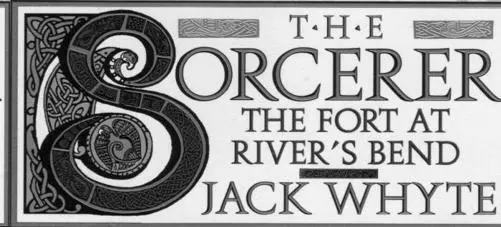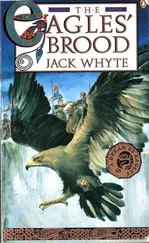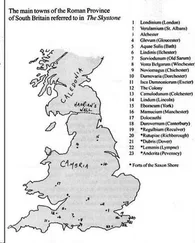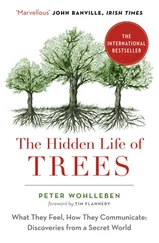
PENGUIN BOOKS
the sorcerer:
the fort at river's bend
Jack Whyte was born in Scotland and came to Canada in 1967. An actor, orator, singer and poet, his narrative poetry earned him two gold medals at the prestigious New York International Film Festival in 1991 for Best Writing and Best Narration. Jack Whyte's critically acclaimed A Dream of Eagles cycle includes the titles The Skystone, The Singing Sword, The Eagles' Brood, The Saxon Shore, and The Sorcerer Books I and II: The Fort at River's Bend and Metamorphosis.
a dream of eagles
The Skystone
The Singing Sword
The Eagles' Brood
The Saxon Shore
The Sorcerer: Book I The Fort at River's Bend
The Sorcerer: Book II Metamorphosis
To my wife Beverley
and to my grandson,
David Michael Johns,
who finally got old enough to read his Grandpa's books
AUTHOR'S NOTE
The task of acknowledging contributions to my work and to my research has always been a daunting one. I am grateful to so many people for encouragement and assistance that it would be impossible to name all of them. On this occasion, however, three contributions tower above all others in my recollection, since, lacking any of them, this story would not have emerged as it has.
The diagram of a pattern-welded sword that appears on page 319 was developed by John Anstee of Great Britain, who actually made such a sword, using ancient materials and techniques that he had researched over the course of decades. I found the diagram, and a vast range of other equally useful information, in Hilda Ellis Davidson's excellent book The Sword in Anglo-Saxon England. Although first printed in 1962 by the Boy dell Press of Woodbridge, Suffolk, I did not discover it until 1995. Had I made the discovery even a decade earlier, my life would have been much simpler and less racked by doubts. I spent years struggling with my own conception of Excalibur, knowing approximately what I envisioned, yet uncertain of the practicality of the ideas I had so crudely developed from my peripatetic research. Between them, these two people provided both enlightenment and gratifying confirmation.
It was my brother Michael who first introduced me to the setting for The Fort at River's Bend. In May 1993 he was on holiday in the Lake District with his wife Kate when Beverley and I, on a visit to Britain, joined them for a few days in the middle of a glorious early heatwave When Mike learned that I was fundamentally unhappy with the east-coast location I had chosen for this stage in Arthur's education, he drove me up into the Fells for about ten minutes, along the wildest and most frighteningly narrow, precipitous road I had ever seen, and showed me the site I have since come to know so well.
The Fort at River's Bend is still there today and has become one of the most famous surviving Roman auxiliary forts, thanks to its magnificent and isolated setting, high in Britain's beautiful Lake District. Today's visitors know it as the Fort at Hardknott Pass, but Hardknott Pass is a modern name. The fort's original name—something of a jawbreaker to non-Latin speakers—was Mediobogdum, which translates into English as "situated in the curve (of the river)." The name itself was probably pronounced "Media-BOG- d'm," with the emphasis on the third syllable.
The fort lies nine miles north-east of Ravenglass, an ancient coastal town whose name (Yr-afon-[g]las) predates the Romans and means "the blue harbour" in the Celtic tongue of the local inhabitants the Romans called the Brigantes, a fiercely independent people who never were successfully Romanized. The Roman name for Ravenglass was Glannaventa. The Romans built a supply road from there to the inland town of Ambleside on Lake Windermere, threading it through the two bleak passes of Hardknott and Wrynose. The road was a mere thirty miles long, but it was the only route of its kind from the northwest coast south of Carlyle into the hinterland, its importance underscored by the three forts built to guard it: Glannaventa on the coast, Mediobogdum at the highest point and Galava (Ambleside) at the inland terminus. Towns grew up around Glannaventa and Galava, and survived. No such growth occurred in the magnificent but inhospitable and infertile Hardknott Pass. The garrison there was on its own.
The most astonishing thing about the Hardknott Pass fort is that it sat abandoned, undisturbed and unvandalized for almost fifteen hundred years. Only in the seventeenth century, when the oak forests of Eskdale were plundered to build ships for the Royal Navy's wars, did the fort come to light. Land clearance followed the destruction of the forests, bringing in more and more farmers, who began to strip the sandstone blocks from the great gateways to build houses for their families. In the early nineteenth century, William Wordsworth alluded to the fort, in one of his Duddon Sonnets, as "that lone Camp on Hardknott's heights / Whose guardians bent the knee to Jove and Mars. " /
Since then, in the past century, hordes of souvenir- hunting visitors have stripped away all the magnificent red tiles that decorated the underground hypocausts, or central heating pillars, that served the bathhouse outside the walls of the fort, and there is no way of knowing how much else has vanished into the same abyss.
The site, maintained now by a local society dedicated to its preservation, is a fascinating place, where history reaches out and grabs you by the throat. I returned to spend a period of weeks there in 1995, living in the delightful Bridge Inn at Santon Bridge, Wasdale, and passed many hours each day absorbing the atmosphere of the fort and the countryside around it, grateful for the support and encouragement of local residents, many of whom were highly knowledgeable about the fort and its environs. The original garrison who built and occupied the fort were Dalmatians—from the region that today is Croatia and Serbia—and I wanted to acquire some impressions of how they must have felt in their isolated post up among the misty, rain-soaked peaks so many hundreds of years ago, with no welcoming little inn awaiting them on the valley floor. All of those impressions, and most of what I discovered about Mediobogdum and its history, will be found in this story. The descriptions of the fort and the details of its construction are accurate. The road it guarded—identified only recently as the famous Tenth Iter of the Antonine Itinerary—climbs from the valley floor to the summit of Hardknott Pass at a gradient of 1 in 3 and presents astonishing challenges even to modern vehicles. The river in whose bend the fort nestles—although far below— is the Esk.
Some aspects of my description may raise quizzical eyebrows among my readers, but even the most surprising of these details are factual. The Romans used concrete, and the domed roofs of the fort's warehouses were made of that material, so that each lateral wall had five buttresses to support the weight of the concrete. Those roofs endured for centuries, perhaps even for a millennium. The barrack- houses were floored with mortar, The garrison also boasted a sophisticated, running-water latrine exactly as described herein. The inscribed plaque above the main gate has been recovered and restored. The bathhouse was as described and was sixty-six feet long and twenty feet wide, its waters tapped from the nearby stream known today as the Campsike. Since the place sat intact for fifteen hundred years after its abandonment, it seems reasonable to postulate that it would have been refurbishable and habitable when Merlyn had need of it a mere two hundred years after the garrison had departed.
Читать дальше









